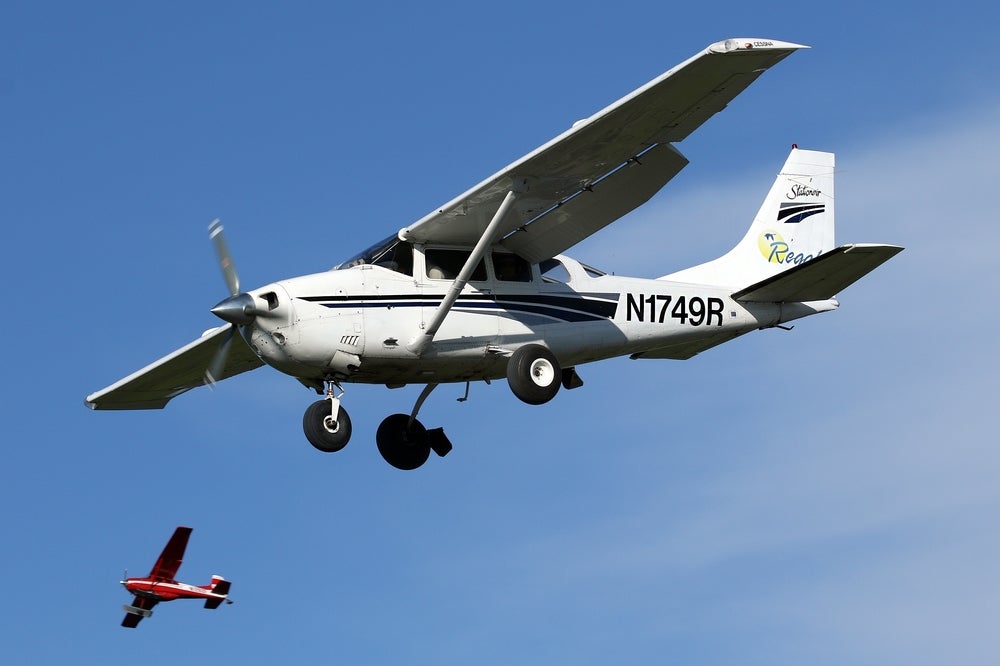The FAA updated an advisory circular to emphasize pilots’ responsibility to see and avoid other aircraft in order to prevent mid-air collisions. To help make its point more forcefully, the agency cited a particularly notable 2019 mid-air crash in Alaska.
The FAA said the new AC, which supersedes one released in 2016, and follows numerous fatal accidents in which aircraft collided in flight, is meant to help pilots increase their effectiveness in spotting traffic and responding properly.
It also lets pilots know the agency is aware of their concerns regarding the frequency of midair collisions in general aviation. Such accidents seem to be occurring often despite vast improvements in collision avoidance equipment and mandatory ADS-B technology in aircraft.
“This AC is issued to assist pilots with their regulatory obligation to see and avoid other aircraft. Specifically, this AC looks to alert pilots to human contributors to midair collisions and near midair collisions, and recommend improvements to pilot education, operating practices, procedures, and improved scanning techniques to reduce midair conflicts.”
The FAA noted that the advisory circular is not a regulation, but is “intended only to provide clarity to the public regarding existing requirements under the law or agency policies.”
The agency said the human eye remains “the most advanced piece of flight equipment,” but that pilots need to learn proper visual techniques and be aware of the eye’s limitations. The new AC also cites numerous factors that can hamper pilots’ ability to spot traffic, from distance, relative motion and lighting conditions to blind spots caused by aircraft structures like wings, window posts, and struts.
When ‘See and Avoid’ Practices Fail
Some of these factors appear to have played roles in a landmark collision that took place May 13, 2019, near Ketchikan, Alaska. The accident involved a de Havilland Otter with a pilot and 10 passengers and a de Havilland Beaver carrying a pilot and four passengers. The aircraft were headed in the same general direction but on courses that gradually converged in heading and altitude. As they neared each other, parts of each aircraft obscured the pilots’ views, preventing them from spotting each other, according to a National Transportation Safety Board report published last year. The report included a video animation that illustrated how the board believes the accident unfolded.
The collision caused the death of one passenger in the Otter and injuries to the remaining passengers and the pilot. All occupants of the Beaver, which broke up after the collision, died of their injuries.
According to the report, the probable cause for the accident was “the inherent limitations of the see-and-avoid concept” and the lack of visual and aural alerts from the traffic display systems of both aircraft. The NTSB said the Otter’s system was not broadcasting its pressure altitude. As a result, the Beaver’s traffic warning system could not provide the corresponding altitude alerts.
Accidents like the Ketchikan mid-air give pilots pause, in part because many, if not most, can recall instances in which traffic seemed to sneak up on them, passing surprisingly and perilously close. They know how difficult it can be to spot traffic even in the clearest sky.
Advanced traffic awareness and advisory systems such as TAS, TCAS, and ADS-B are wonderful tools but they might lead us into complacency, listening for alerts instead of actively scanning for traffic. While the FAA’s advisory circular update covers many methods for improving situational awareness and avoiding collisions—from disciplined ground operations and radio communications to more thorough use of electronic flight monitoring equipment—its main point was that a constant, methodical, and well-practiced scan for traffic forms the foundation of collision avoidance.
